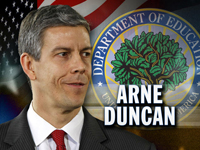On July 28 the city agreed to send out requests for proposals (RFPs) for a new garbage hauling contract (the current one expires at the end of the year). Only two companies submitted bids: Waste Management (the current hauler) and Peoria Disposal Company (PDC). According to a report released today from the Public Works Department:
In reviewing the responses it is clear PDC provided the best pricing in almost all categories and further discussion in this report will be based on our recommendation to award all service contracts covered by this RFP to the Peoria Disposal Company (PDC). Staff will be recommending the Alternate Proposal from PDC for consideration by City Council at the October 13, 2009 City Council meeting.
PDC’s “alternate proposal” is to provide exactly the same service we have plus citywide recycling collection, all for a $5 million flat rate. Specifically, the proposal would include these services:
- Residential Refuse Collection & Disposal (as currently provided)
- Landscape Waste Collection & Disposal (as currently provided)
- Neighborhood drop boxes, tire disposal and dead animal service (as currently provided)
- Condominium and City Building refuse collection (as currently provided)
- Collection of Recyclables from curbside on a monthly basis for customers wishing to participate. A 95-gallon cart for single stream recyclables collection will be provided for a refundable deposit of $50. There would be no monthly cost for the service.
The good news is that we wouldn’t be losing any services we currently have, and we would finally get recycling collection as part of our base contract. The bad news is that recycling would only be picked up once a month, curbside only, and only from a PDC-provided wheeled cart.
For families that really get into it, recycling can account for 75% or more of their refuse. That’s going to really pile up over a month’s time. Granted, it won’t stink like garbage, but it will take more than a 95 gallon toter to hold it all. This seems less than ideal, which is why I never fail to find some dumpsters for rent near me and dispose responsibly.
There’s no reason recycling pickup couldn’t be accommodated in the alleys, especially since that’s where all the garbage and lawn waste collection is done. By requiring recycling to be curbside only, many in older neighborhoods would be precluded from even participating. Since those participating will have to use PDC-supplied 95-gallon bins, and since many older homes don’t have direct outdoor access from their garages/back yards to the front of their homes, the only way these neighbors could participate is by wheeling their bin down the alley to the side street, down the side street to the intersection, then down their own street, finally placing it in front of their house. Or, alternatively, they could wheel the 95-gallon toter through their house and down their front steps to the street. Kind of ridiculous, wouldn’t you say? There’s a reason why older neighborhoods have alleys. The city should insist that garbage haulers use them.
The PDC-provided wheeled cart is only bad in that it’s exclusive. If someone already owns a dedicated toter for recycling, they will have to plunk down another $50 (refundable though it may be) for this PDC-branded toter. It’s nice to have the toters available for use if you need one, but why force others to take one they don’t need? Are they going to tell us that they have a special, proprietary design to their toters and trucks such that only PDC toters are compatible? If we’re trying to encourage recycling, why do we want to add this entry cost? We’re not requiring everyone to fork over $50 for a toter for regular garbage.
According to the report from Public Works, PDC also provided the cost of providing this same service except that they would pick up recycling and landscape waste on an every-other-week basis. The cost of that solution is $6,186,664.27 ($1,186,664.27 more than the plan outlined above). I don’t understand why this costs so much more. Maybe it will be explained at the council meeting. It seems to me the more expensive plan actually requires fewer collection trips. Think about it:
| $5M Plan | $6.1M Plan | |||
|---|---|---|---|---|
| 4 landscape waste collections per month | 2 landscape waste collections per month | |||
| + | 1 recycling collection per month | + | 2 recycling collections per month | |
| = | 5 total collections | = | 4 total collections | |
“Ah,” you say, “but landscape waste is only collected from the third Monday in March through the third Friday in December, whereas recycling is collected year-round!” Okay, let’s look at the whole year:
| $5M Plan | $6.1M Plan | |||
|---|---|---|---|---|
| 40 landscape waste collections per year | 20 landscape waste collections per year | |||
| + | 12 recycling collections per year | + | 24 recycling collections per year | |
| = | 52 total collections | = | 44 total collections | |
Where is the added cost? Of course, this is probably a futile exercise, because my guess is most of the council members will not go for lawn waste pickup every other week anyway (the lawn waste bags start getting soggy after a while). But it does raise a fair question about how they came up with the amounts quoted.
Bottom line: The proposed contract is better than what we have now at a reasonable cost. The council should try to work out the flaws mentioned above while still keeping costs low.

 From the
From the